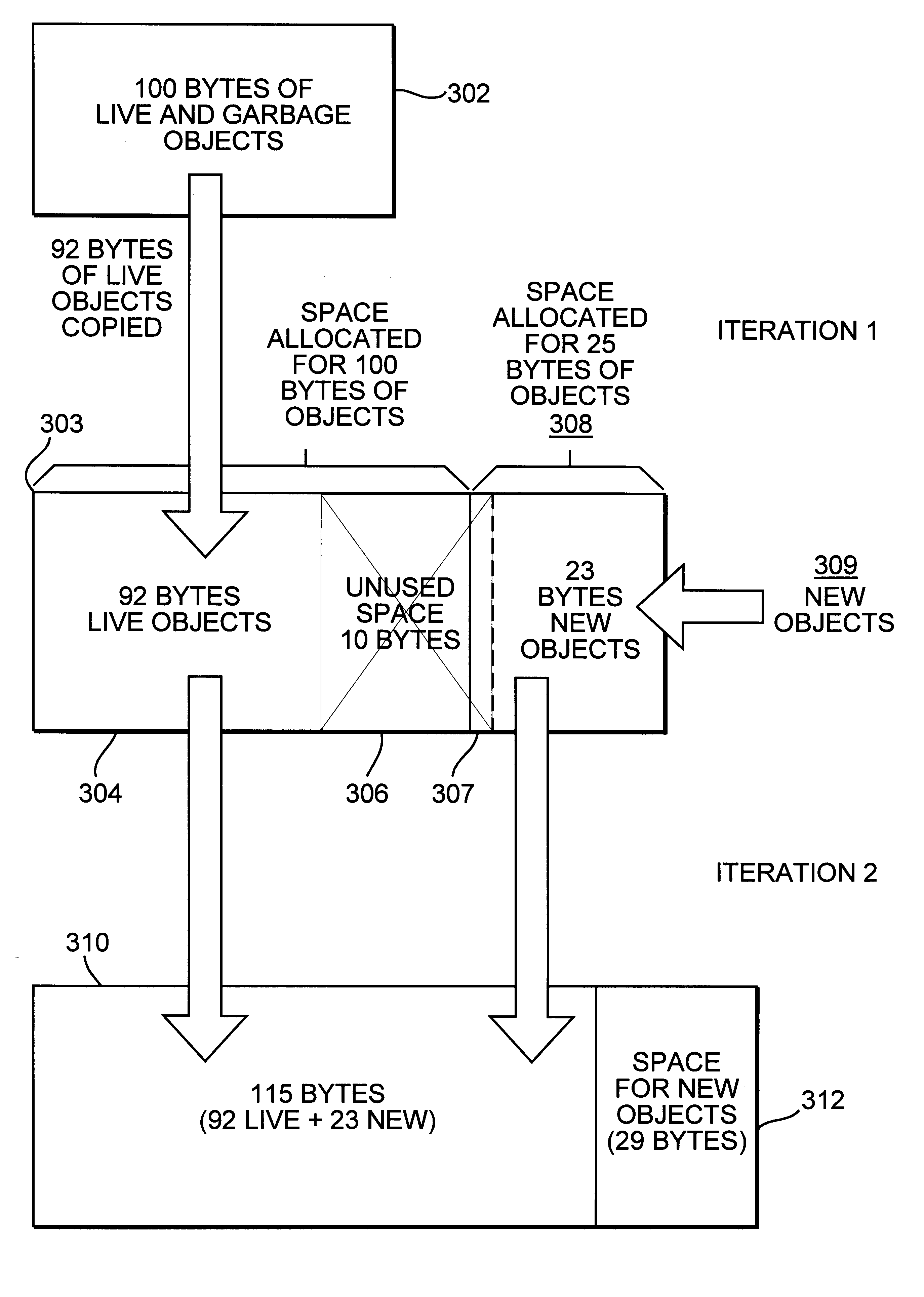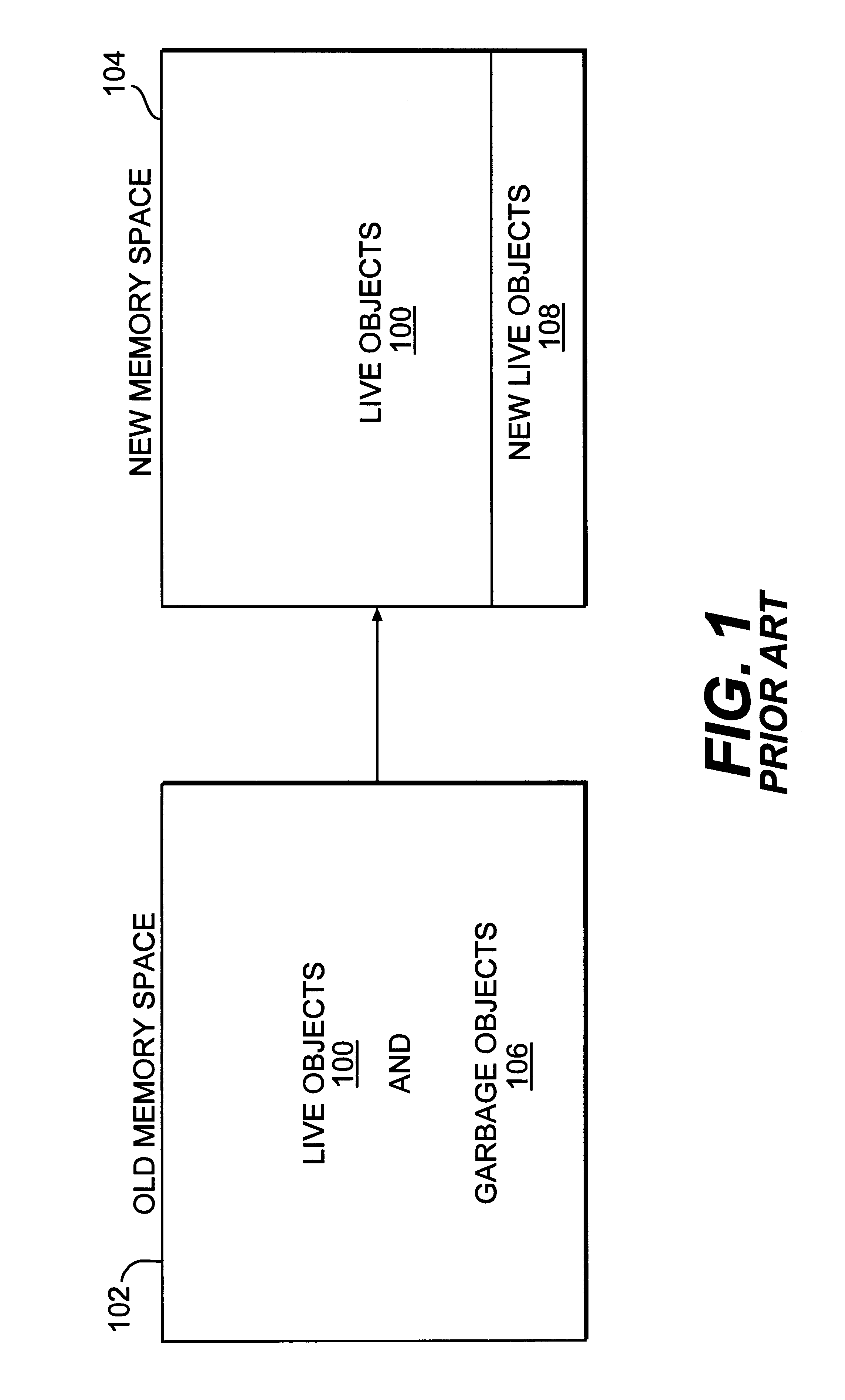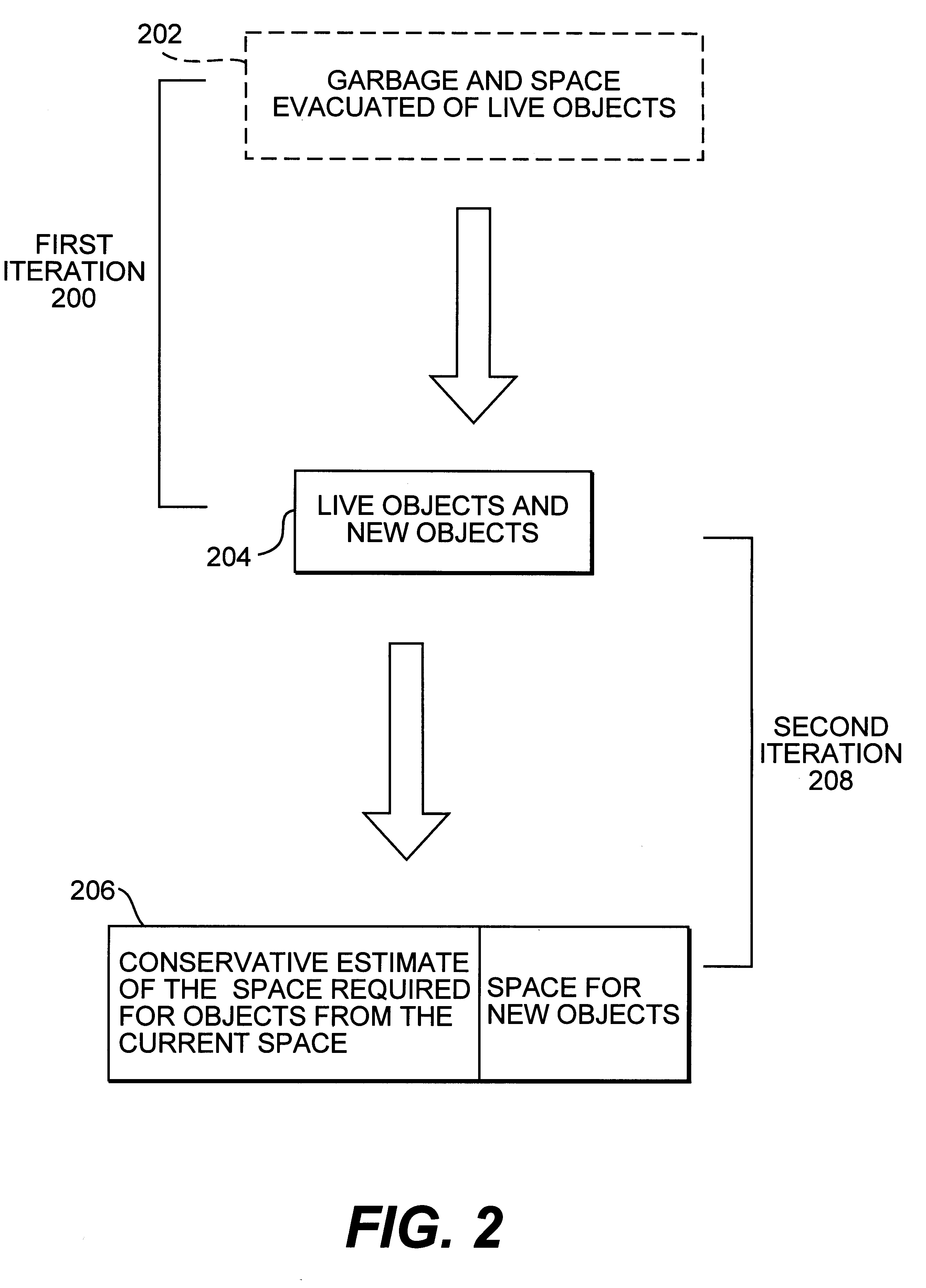Incremental heap expansion in a real-time garbage collector
a garbage collector and real-time technology, applied in the field of data processing systems, can solve the problems of large affecting the overall performance of the system, and eventually becoming garbage, live objects in the new memory space 104 becoming unreachabl
- Summary
- Abstract
- Description
- Claims
- Application Information
AI Technical Summary
Problems solved by technology
Method used
Image
Examples
Embodiment Construction
To more clearly describe the processing of the garbage collector consistent with systems and methods consistent with the present invention, an example is now provided with reference to FIG. 3. For purposes of illustration, only two iterations of the process are shown in FIG. 3. For simplicity, a few arbitrary assumptions are made about the two iterations. First, the FromSpace 302 shown in iteration 1 of the process contains 100 bytes of objects. In this example, 8 bytes of these objects will eventually become garbage, leaving 92 bytes of live objects. Additionally, space for 25 bytes of new objects are reserved in the ToSpace 303 during iteration 1.
To provide a clearer illustration of the expansion of the heap, during the second iteration, no new objects are allocated. Additionally, all objects survive (none become garbage), and all objects are copied into the ToSpace 310 of iteration 2.
As stated, FromSpace 302 contains 100 bytes of live and garbage objects. Initially, a ToSpace 303...
PUM
 Login to View More
Login to View More Abstract
Description
Claims
Application Information
 Login to View More
Login to View More - R&D
- Intellectual Property
- Life Sciences
- Materials
- Tech Scout
- Unparalleled Data Quality
- Higher Quality Content
- 60% Fewer Hallucinations
Browse by: Latest US Patents, China's latest patents, Technical Efficacy Thesaurus, Application Domain, Technology Topic, Popular Technical Reports.
© 2025 PatSnap. All rights reserved.Legal|Privacy policy|Modern Slavery Act Transparency Statement|Sitemap|About US| Contact US: help@patsnap.com



